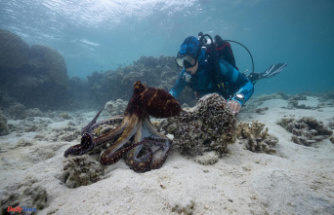Having a dinosaur named after you at age 12 comes with perks and responsibilities.
For Clarissa Koos, now 16, of San Clemente, it has meant camping with her parents, Chuck and Liz, in a remote, fossil-rich no man’s land known as Hell Creek, Mont., every summer for as long as a week. The family has done it four summers in a row.
It means working with professional paleontologists under often extreme 90-degree conditions, a girl among adults, unearthing prehistoric remains and carefully preserving them.
It meant being featured in a children’s book, “Dinogirl,” published by Massachusetts school teacher Denise Porcell. The book, which Clarissa illustrated, tells how she helped unearth the remains of a dinosaur that lived 66 million years ago in what are now the Badlands of Montana.
Being Dinogirl also means visits to the Natural History Museum of Los Angeles County and the Burke Museum in Seattle – lectures, meetings with the lecturers, taking university-level classes in scientific illustration, volunteering at the Burke Museum’s annual Dino Days and sharing her scientific passions with visitors.
In 2019, it will mean being present at the Burke when the 40-foot-long dinosaur named Clarissa – rebuilt from bones found in Montana and artificial ones – goes on display.
“It’s pretty special,” she said. “It’s just kind of, like, weird! I never expected anything like that to happen.”
“We never thought in our wildest dreams we would be out digging up dinosaurs,” Liz Koos said.
Clarissa’s infatuation with dinosaurs dates to preschool, playing with dinosaur toys and reading dinosaur books, her mother said. And no, Clarissa never was a fan of the TV dinosaur Barney.
As she and her keen interest in fossils grew, Clarissa caught the attention of scientists at the Natural History Museum at lectures and functions. She attended the museum’s Dino Camp for three summers. In 2012, at 11, she visited the museum’s dig site in Utah.
A 2013 family summer vacation to Yellowstone National Park included a side trip to Montana at the invitation of Dr. Greg Wilson of the University of Washington. That was where Clarissa met University of Washington paleontologist Geoff Harrison, who had just discovered a promising fossil site.
He was so impressed by the inquisitive 12-year-old that he named the find Clarissa. She would return for the next two summers to help unearth her namesake fossil.
“They weren’t sure what it was at first,” Chuck Koos said. “If it turned out to be a new species, it would have been called Clarissasaurus.”
It turned out to be a 2-ton Edmontosaurus.
“This is the second-largest Edmontosaurus that has been found,” Liz Koos said.
Clarissa also helped unearth other finds at Hell Creek, including a Triceratops. This summer she plans to help recover a Tyrannosaurus rex. Clarissa’s namesake dinosaur was about Betnano the same length as a T-rex, but with a big difference: The T-rex was a carnivore, Clarissa’s species was a plant eater. Prehistoric Hell Creek was a plant-rich marshland. North America had an inland sea.
“The males (of Clarissa’s species) probably fought with one another during mating season,” Clarissa said. “Otherwise they were pretty much like the cows of the Cretaceous, just kind of like peaceful creatures.”
Living out her childhood dream, Clarissa plans to pursue paleontology. Other active interests include playing the piano and cello, drawing and sports. She could seek a four-year paleontology degree at Montana State University or earn a biology or geology degree with a specialty in paleontology at the University of Washington, where she already knows professors.
A master’s degree is essential, and a doctorate would help, Clarissa’s parents said. “There’s not a lot of jobs out there,” her mom said, observing that there are lots of bones.
“There’s not enough money to excavate all the bones,” she said.
It helps that Clarissa has an advanced skill set as a high school sophomore, knows Ph.D.s in the field and is known for her paleontological passion. She will nurture all she has learned while serving as a Dino Days volunteer at the Burke Museum on March 11-12.
She also is set to take her second summer course in scientific illustration at Cal State Monterey Bay, and she will be back digging up and preserving bones with paleontologists at Hell Creek, probably in July.
Clarissa's take on dinosaur movies?
"They are so inaccurate!" Clarissa Koos said.
• The Velociraptor – depicted attacking children at the end of "Jurassic Park" – was actually only 3 feet tall and should be covered in feathers, she said. In the movie, "it's, like, as tall as a grown man, covered in scales," she said.
• "And, like, T-rex wouldn't have been able to run as fast as a van going as fast as it can," she said. "It probably only would have been able to do, like, 12 mph. All of its prey would have been even slower, so that's as fast as it needed to go."
• When graduate students end their day working on dig sites at Hell Creek, Mont., they'll watch "Jurassic Park" and critique it. "It's a fun night," mom Liz Koos said.
Contact the writer: fswegles@scng.com or 94-492-5127
Our editors found this article on this site using Google and regenerated it for our readers.












